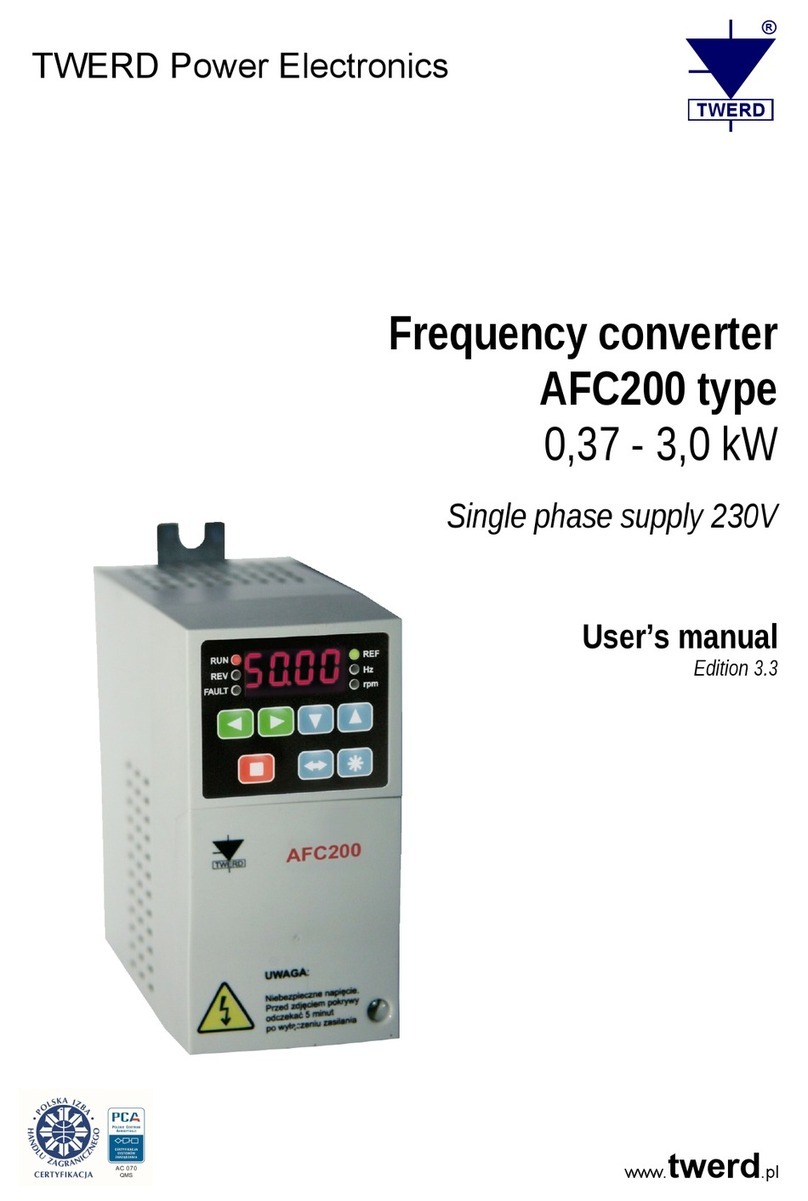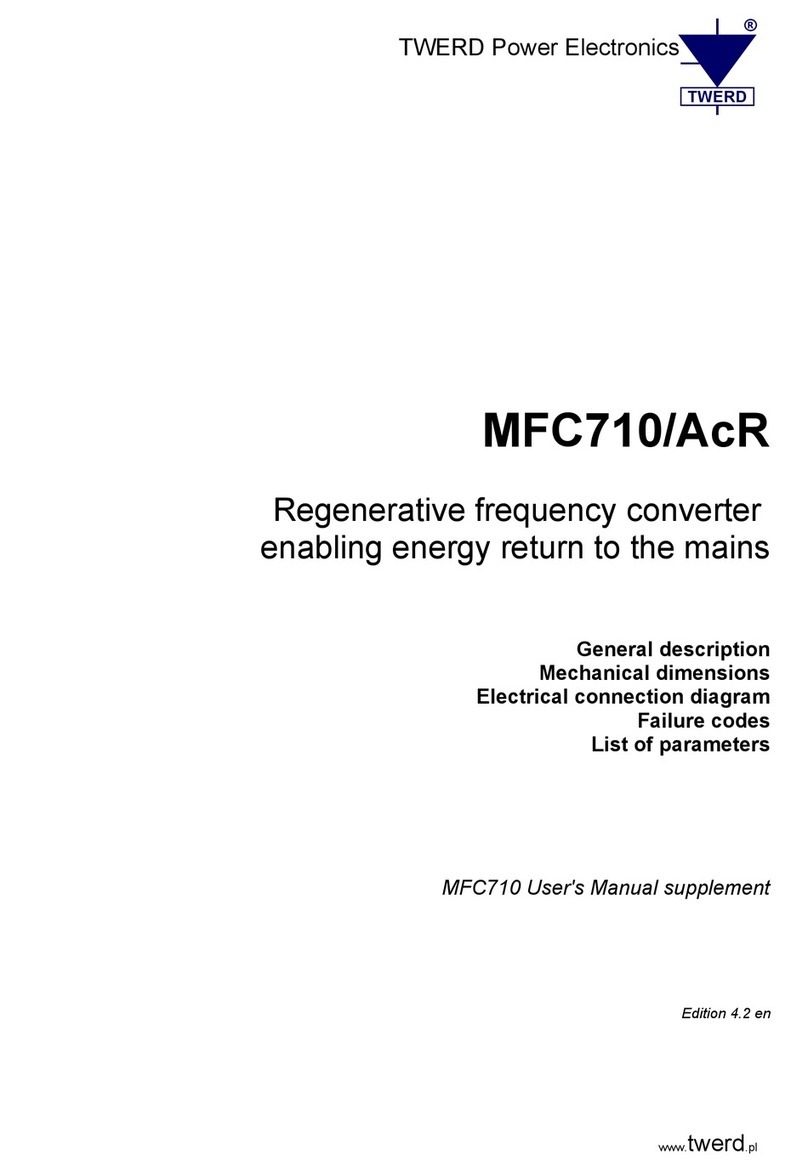ontents
Contents
Technical data....................................................................................................................................................................... 7
Installation figures......................................................................................................................................................... 10
1. onditions of safe operation........................................................................................................................................... 12
1.1 Warnings................................................................................................................................................................. 12
1.2 Basic rules...............................................................................................................................................................12
1.3. Operation list.......................................................................................................................................................... 13
1.4. Environmental conditions.......................................................................................................................................13
1.5. Recycle................................................................................................................................................................... 13
1.7. E marking............................................................................................................................................................. 14
2. Installation of the frequency converter............................................................................................................................15
2.1. onnection of a power circuits...............................................................................................................................15
2.1.1. Safety rules.................................................................................................................................................... 16
2.1.2. Electromagnetic compatibility (EM ) rules....................................................................................................16
2.2. onnection of control circuits.................................................................................................................................18
3. ontrol panel OP-11....................................................................................................................................................... 20
3.1. General description................................................................................................................................................ 20
3.2. Basic view.............................................................................................................................................................. 21
3.3. Review and change of parameters values.............................................................................................................22
3.3.1. Parameters overview..................................................................................................................................... 22
3.3.2. hanging parameters settings......................................................................................................................23
3.4. hanging the values displayed in the basic view..................................................................................................24
3.5. opying of parameters settings between drives....................................................................................................24
3.6. Full pointers............................................................................................................................................................24
3.7. Restore factory settings......................................................................................................................................... 24
3.8. hanging the rotational speed of the motor (output frequency) from the control panel........................................25
3.9. PD access levels and parameters locks................................................................................................................25
3.9.1. PD access levels...........................................................................................................................................25
3.9.2. Parameters locks........................................................................................................................................... 26
3.9.3. hange of access codes...............................................................................................................................26
4. onfiguration of the frequency converter........................................................................................................................27
4.1. Setting nominal parameters of the motor...............................................................................................................27
4.1.1. Preparation for operation in a vector control mode.......................................................................................27
4.2. ontrol.................................................................................................................................................................... 27
4.2.1. Structure of control........................................................................................................................................27
4.2.2. ontrol from the control panel.......................................................................................................................30
4.2.3. ontrol from terminal connections.................................................................................................................30
4.2.4. Work with constant speeds...........................................................................................................................31
4.2.5. Motopotentiometer......................................................................................................................................... 32
4.2.6. Other possibilities of the frequency converter control...................................................................................32
4.2.7. onfiguration of digital and analog inputs and outputs.................................................................................33
4.3. onfiguration of the drive.......................................................................................................................................36
4.3.1. Establishing dynamic characteristics and ways of stopping the motor.........................................................36
4.3.2. Formation of U/f characteristic......................................................................................................................36
4.3.3. Elimination of frequencies.............................................................................................................................37
4.3.4. D (direct current) braking............................................................................................................................37
4.3.5. Mechanical brake..........................................................................................................................................37
4.3.6. Flying start..................................................................................................................................................... 38
4.4. Protection and blocking..........................................................................................................................................38
4.4.1. urrent, frequency and the torque limitations...............................................................................................38
4.4.2. Blocking a direction of electric motor rotation...............................................................................................38
4.4.3. Blocking the drive operation..........................................................................................................................38
4.4.4. Thermal protections of the motor...................................................................................................................39
4.4.5. Autostart blockade......................................................................................................................................... 41
4.5. Motor drying function..............................................................................................................................................42
5. The first start................................................................................................................................................................... 44
5.1. Vector control mode. Identification run.................................................................................................................. 44
5.1.1. Stages of identification run............................................................................................................................44
5.1.2. Switching on identification run....................................................................................................................... 44
5.2. Storing and reading of options for 4 different motors.............................................................................................45
6. Failures and warnings..................................................................................................................................................... 46
6.1. Messages on failures and warnings on the control panel......................................................................................46
6.2. Deleting failure message. Automatic restarts........................................................................................................46
6.2.1. Manual deleting.............................................................................................................................................46
6.2.2. Deleting through a digital input of the converter............................................................................................46
6.2.3. Remote deleting through RS link................................................................................................................... 46
6.2.4. Readiness to restart if the reason of failure has not disappeared.................................................................46
6.2.5. Automatic restarts.......................................................................................................................................... 47
6.3. odes of failures and warnings..............................................................................................................................47
6.4. Failure and warning log..........................................................................................................................................49






























